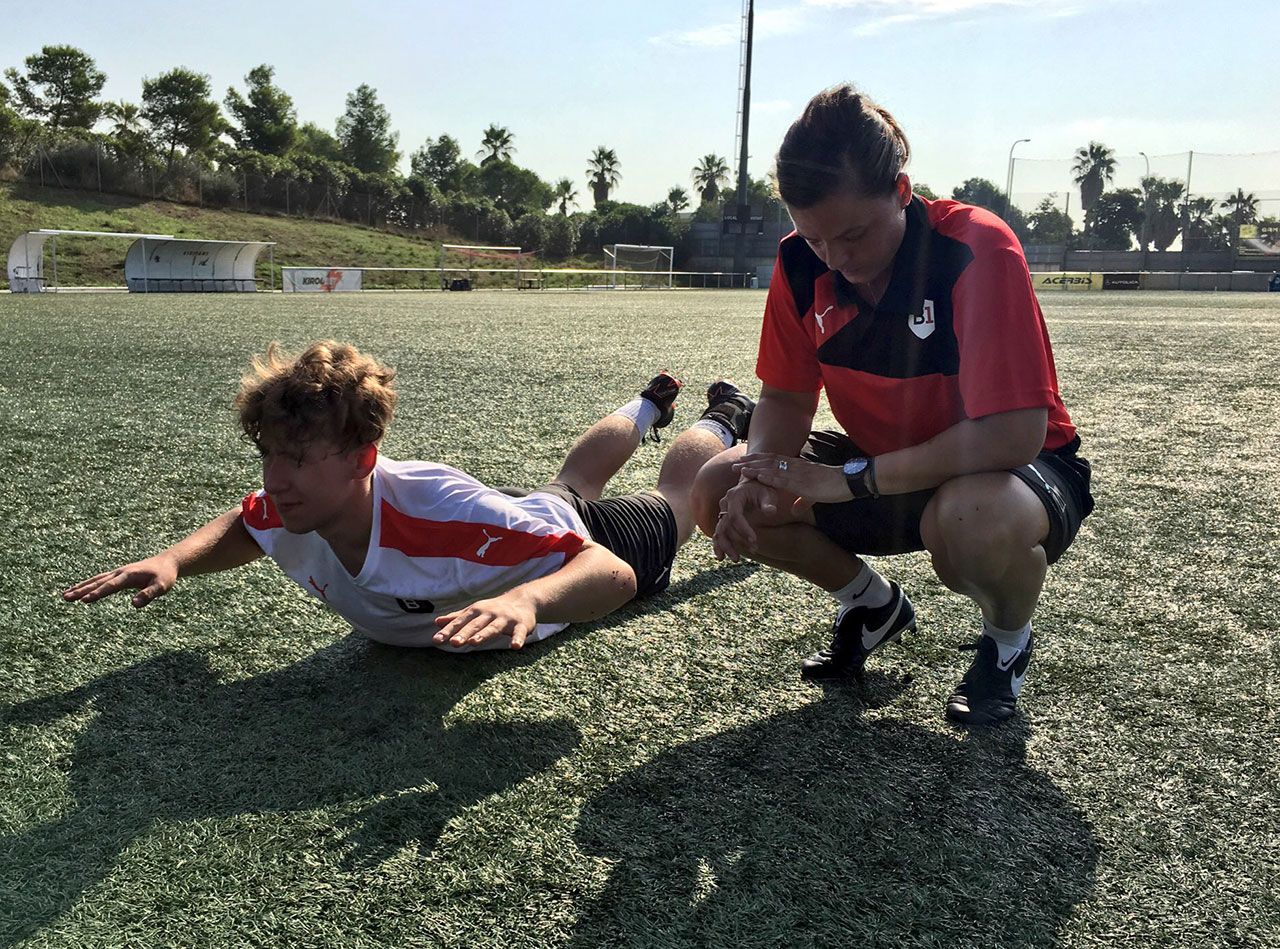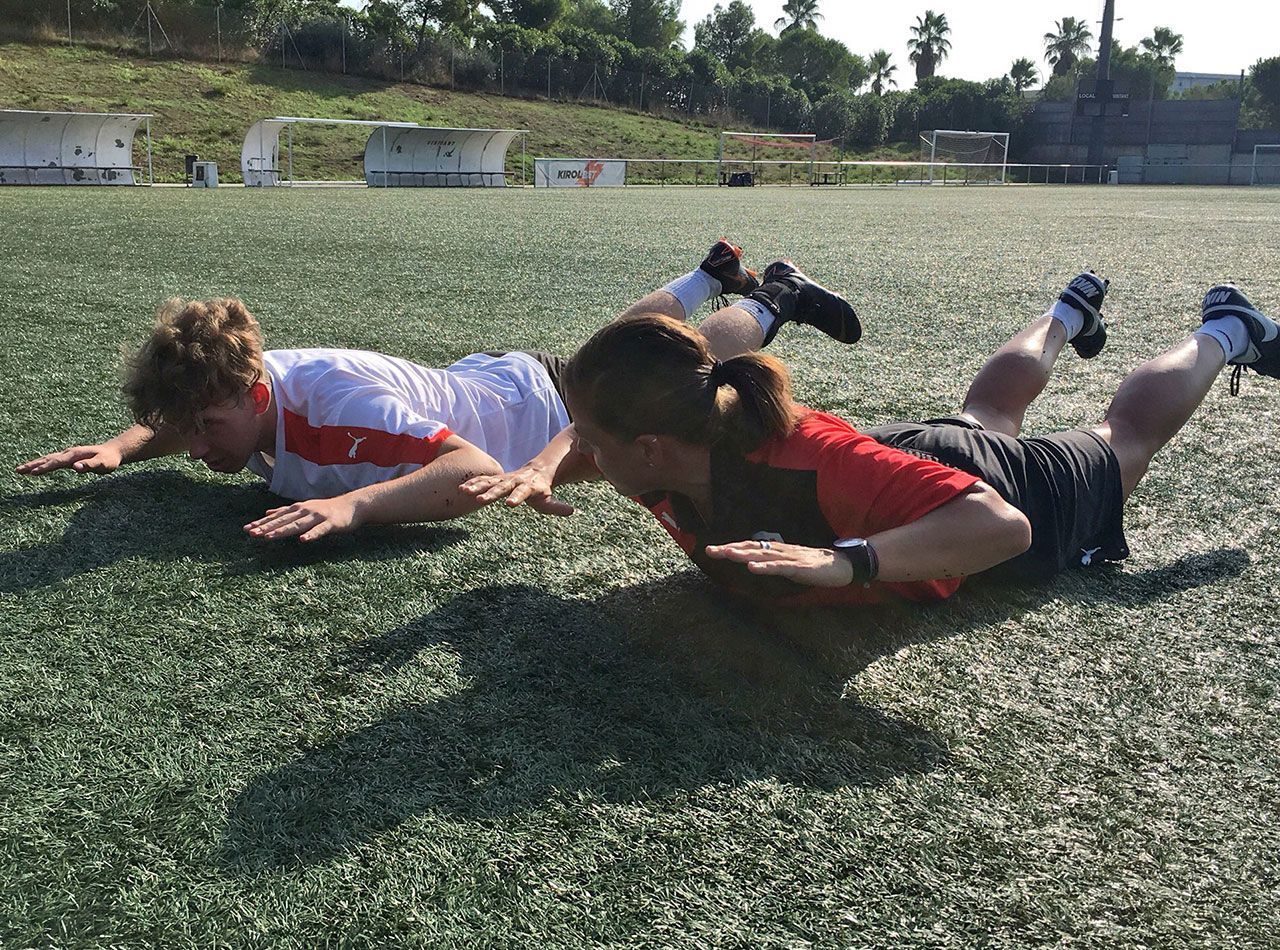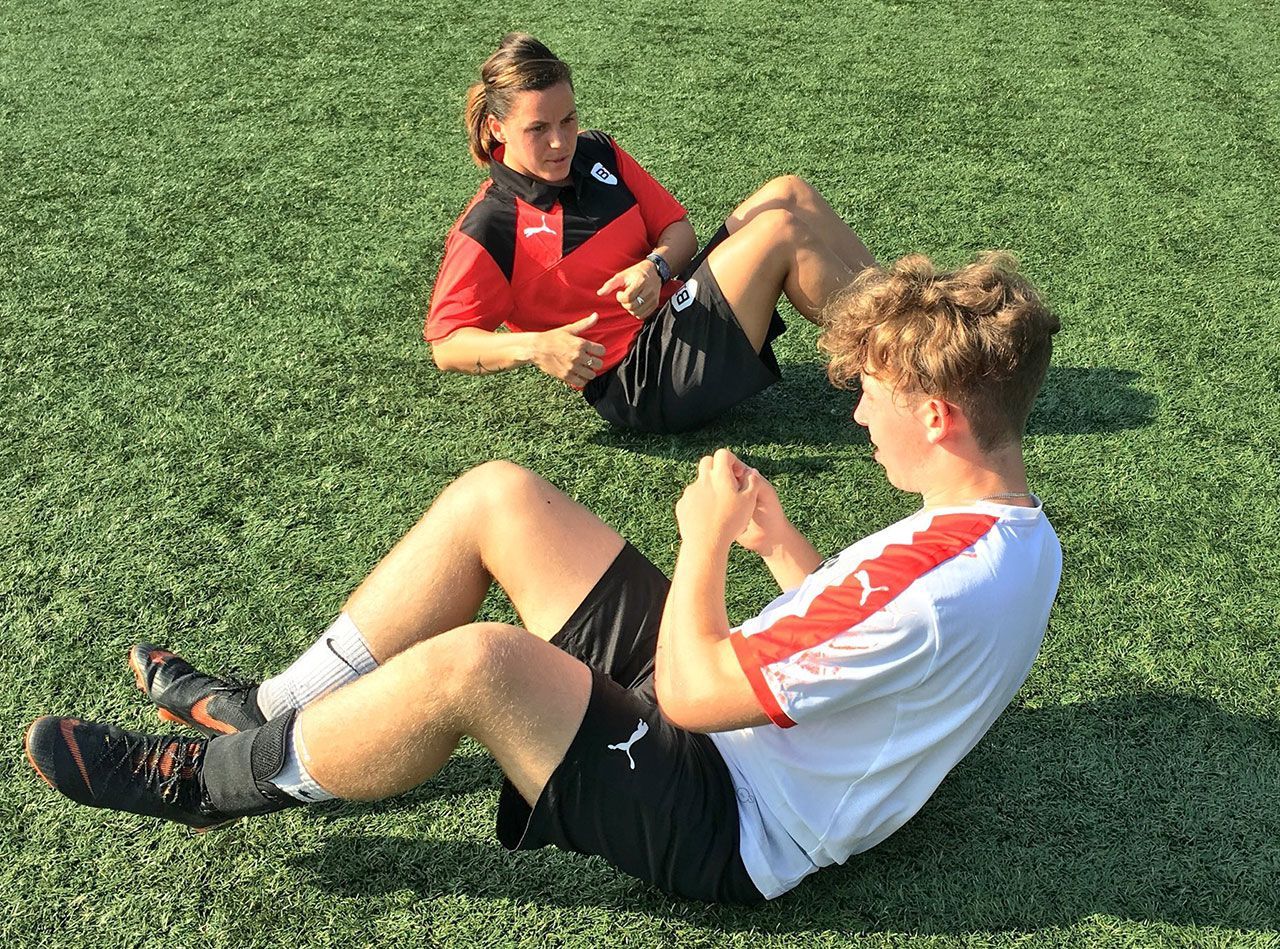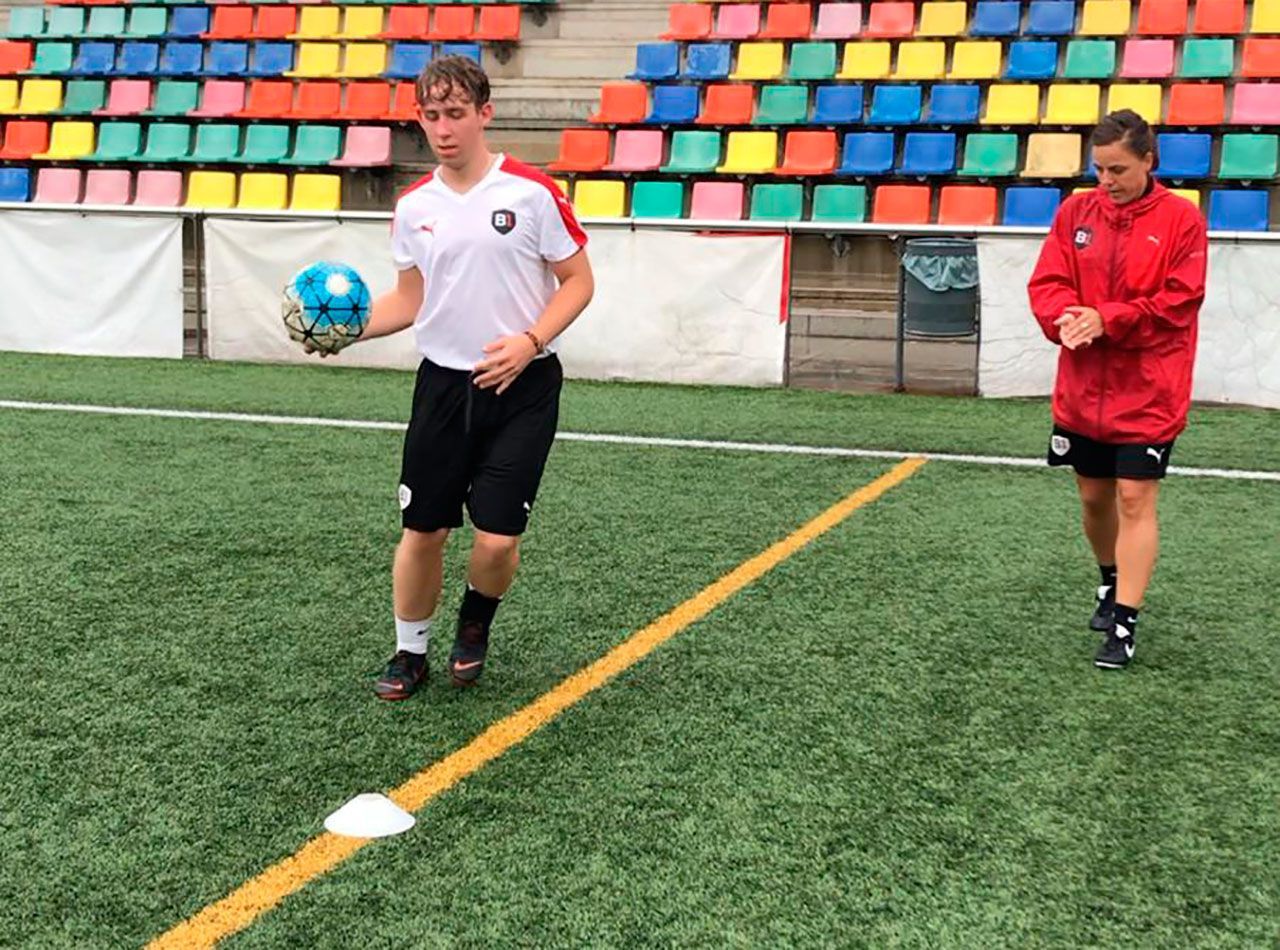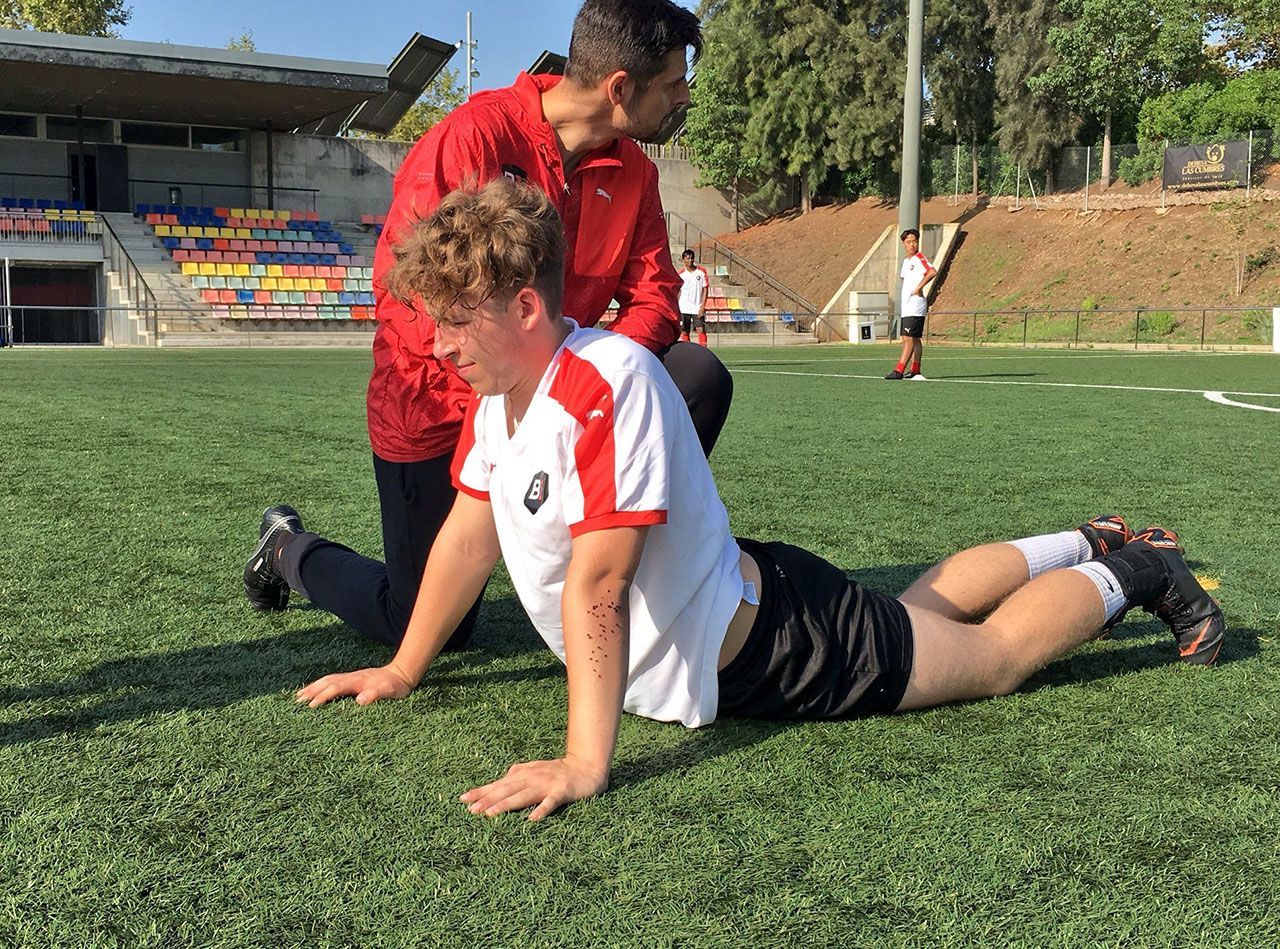The sport’s readaptation is the union that exists in the sports field, between the physiotherapy and the physical preparation. For a sportsperson to be fully recovered from an injury, it is necessary the combination of diverse professionals.
And quite often we talk about the conditional work that the players are making to be able to perform at the highest level and how its preparation during pre-season will determine its performance during the season.
But little is mentioned the great job and hours that are behind the players’ readaptations and rehabilitation that come out of surgeries and/or injuries of a certain severity.
The objective of the sports readaptation is to get the athlete to return to physical activity more quickly and optimally after suffering an injury. In B1 Soccer Academy we are knowledgeable of the particularities that this process entails and we also work to avoid possible future injuries.
In B1 Soccer Academy we have Marina Schachowskoj, soccer coach with extensive experience, a specialist in the readaptation work and Life Kinetic expert.
DISCOVERING LIFE KINETICS FOR THE READAPTATION
In any training situation or game, the players never have one single action to process, but they constantly have an information overload. Above all, this information must be processed, take a decision and provide an answer.
Like “brain training”, only through movement, it is designed to keep one’s brain active and developing by forcing it to complete unfamiliar actions.
Tasks given to individuals at the classes could include juggling, the egg and spoon race, or jumping around while reciting information from memory. Once an action is mastered, they’re given a new set of actions to focus on. In football training, Life Kinetik tends to involve combining movement patterns, visual tasks, and cognitive elements. Thus, creating an information overload for the brain to sort out as quickly as possible.
Life Kinetik training forces multiple brain regions to actively work together simultaneously. This collaboration creates new connections in our brains, which allows us to master various movement challenges.
“Is important to develop diverse capacities for any form and not just focus the decisions in players without injuries. Even in rehabilitation, it is crucial to involve the players continuously mentally to try to replicate an overload of stimuli.”
WORKING TO IMPROVE
- Dynamic: mental/physical
- Challenge = Fun
Activity 1: Working stability
The color of the cone identifies a physical action followed by the verbal response. For example, the blue cone indicates touch your left side while verbally must name different clothing brand names.
Activity 2: Hand coordination/eyes
The verbal command unchains the physical response of the players (physical movement of the upper/lower part of the body) and the verbal response. For example; the blue color means take a step in front while verbally the player must say the names of the soccer clubs.
This type of activity Life Kinetic poses different launch sequences/attention executed to help coordinate harmonically the movement, the equilibrium, the coordination in between the hand and the eye, the visual perception, and the attention.
Can you process the verbal signals and/or catch and/or pass and/or throw the ball correctly? Can you find moments in which the players take incorrect steps? Do you struggle to provide a verbal answer in the right moment?
By adding movement, visual tasks, and cognitive elements, multiple brain regions work actively together simultaneously and help to increase the performance in and out of the field. And all those elements help, without a doubt, in the readaptation of the players and in the improvement of all and each one of them.
Currently working on:
- Eye tracking
- Fewer errors
- Stress reduction
- Peripheral vision
- Balance
- Processing information
- Spatial awareness
- Improved sleep
- Coordination
- Faster thinking
- And, for sure, ALWAYS FUN!

